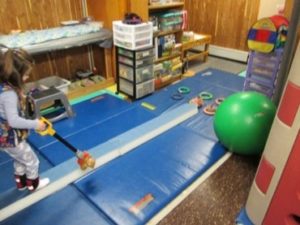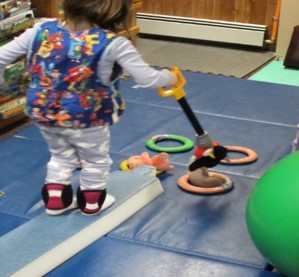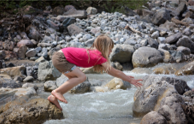Functional vision – incorporates use of the visual system to identify the layout of the near, distant, and peripheral environment while orienting oneself to objects within those confines. Many children who have sensory processing disorders have difficulty with various aspects of functional vision.
Visual pursuits – the ability to coordinate movements of the eye muscles in order to follow movement of an object, such as a bird in fight, and also while positioning oneself as the body moves through space. For example, when watching hands and fingers lace up a shoe. Visual pursuits also incorporate the anticipatory moves used when reading as the eyes visually coordinate moves along a stationary line of print.
Body Righting Reactions – the reflexive responses throughout the body that are designed to position the head vertically, and to align the trunk and limbs in response to gravitational influences. Body righting reactions allow for the ability to negotiate the environment without collisions or falls
Children who have sensory processing disorders frequently experience difficulty when carrying objects while they navigate their environments at home and at school due to poor functional vision in collaboration with poor body righting reactions. These children tend to fall a lot.
Activities that incorporate use of targets in the near, middle and distant environment while addressing balance, help the children learn how to maintain functional vision while balancing and moving through space.




Comments are closed.